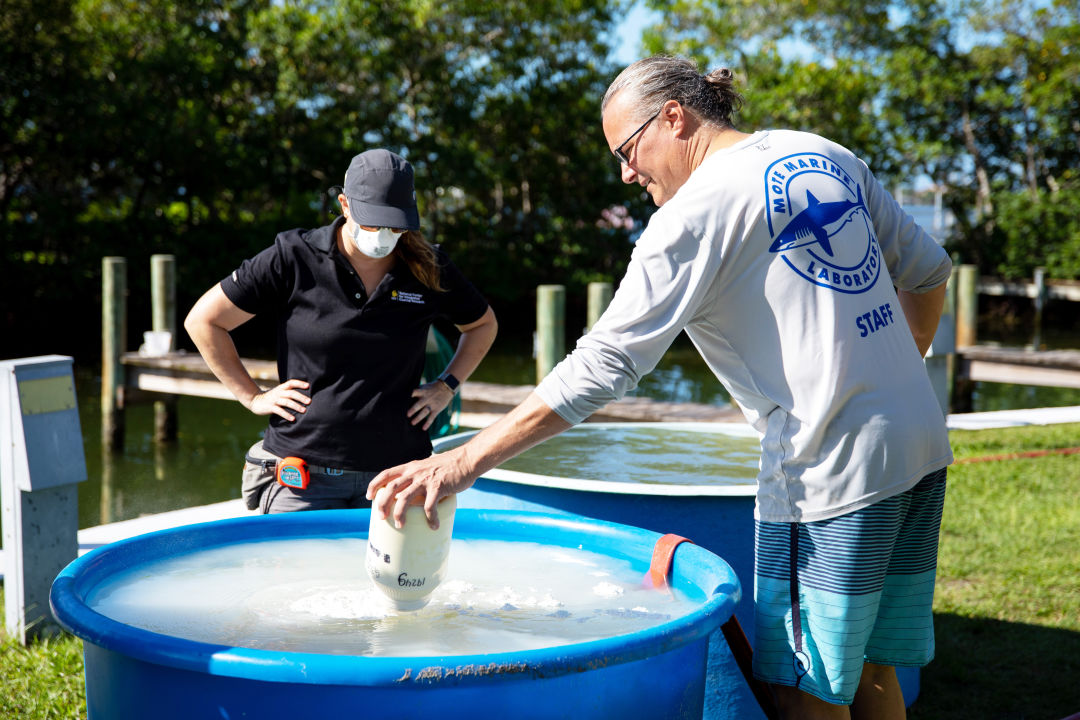Mote Tests New Method to Kill, Bury Red Tide Cells

Mote researchers attempt a red tide mitigation effort called clay flocculation in Sarasota on Friday, July 16.
In response to the current red tide bloom, which is affecting Sarasota Bay, Tampa Bay and areas along the coast from Pasco to Sarasota counties and causing widespread fish kills, researchers from the Florida Red Tide Mitigation & Technology Development Initiative have come together to deploy and test the ability of clay to remove cells and toxins, a mitigation strategy that's been used in other settings globally to control other types of harmful algae blooms. The initiative is led by Mote Marine Laboratory & Aquarium in partnership with the Florida Fish and Wildlife Conservation Commission.
Florida red tides are caused by an overabundance of an algae called Karenia brevis. Clay mitigation—a process known as clay flocculation—involves spraying the surface of the water with a slurry of modified clay particles and seawater. As the dense clay particles sink, they combine with red tide cells and can kill the cells and bury them in the sediment on the seafloor.

Mote staffers create a slurry of seawater and clay particles in the hopes that the resulting slurry will kill and bury red tide cells.
In this instance, dry clay was mixed with seawater to create a slurry, then distributed over the water in the study area with hoses. A screen was placed into the water on one end of the canal, and water samples were taken on both sides to compare the treatment area with non-treated areas. In other studies, clay flocculation has been shown to effectively remove cells from the water, with no re-emergence up to 48 hours after clay control experiments in the laboratory; this suggests that the cells are either dead or incapable of escaping from the clay flocculations. The current study is also assessing the amount of clay needed and the ability of the clay to remove the toxins from red tide-impacted water. In researching mitigation strategies, scientists are focused on not only the removal of cells, but also removal of the toxins produced by the red tide organism. Results are pending.
During a red tide outbreak, some people experience respiratory irritation, including coughing, sneezing, tears and an itchy throat, as well as skin irritation and burning eyes. The Florida Department of Health advises people with severe or chronic respiratory conditions, such as emphysema or asthma, to avoid red tide areas. If you live near the beach and are affected, keep your windows and doors closed, keep the air conditioning or heat on and make sure you check or change the unit’s filter regularly.
Red tide is also harmful to marine life, affecting everything from fish to larger animals like sea turtles, birds and marine mammals like manatees. To help a distressed or deceased sea turtle, manatee, dolphin or whale, call Mote’s 24/7 hotline at (888) 345-2335 if you’re in Sarasota or Manatee counties. Anyone outside the two counties should reach out to the Florida Fish and Wildlife Conservation Commission’s 24/7 hotline at (888) 404-FWCC.



